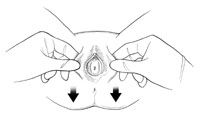Vaginal complaints in the pre-pubertal girl (CME)
An overview of how to evaluate, diagnose, and manage common vaginal complaints in prepubertal girls, such as those from vulvovaginitis.
There are few pediatric issues which are fraught with as much mystery and myth as vaginal complaints in the prepubertal girl. Much of what is taught on the subject in medical schools and residency programs is anecdotal, and simply passed down from one mentor to the next. While there has been a burgeoning body of literature addressing these complaints, few works have advised practitioners on how to apply this new knowledge in a sensitive and effective way. This article aims to fulfill this need.
Initial presentation
Vaginal complaints can come to the attention of a pediatrician in many ways. It can be as obvious as vaginal pain or discharge, or it can be more subtle, such as a complaint of limp or abdominal pain. Care must be taken to consider a vaginal condition even when it is not readily apparent. Even when the presenting complaint is vaginal in nature, there may be some difficulty for the practitioner to assign a specific cause.1

Examination techniques


Condition center
Vulvovaginitis
Vulvovaginitis is the most common genital complaint among prepubertal girls. Young girls are at increased risk for this condition due to the thin, hypoestrogenized mucosal tissue with an alkaline pH, small labia minora, and location proximal to the anus.4,5